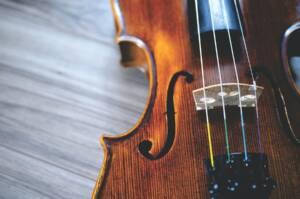The Sound of Perfection: In-Depth Reviews of the Latest Music Gear

Music gear has come a long way since the early days of music production. From the simple acoustic instruments of the past to the complex digital tools of today, the evolution of music gear has revolutionized the way we create and experience music. Over the years, advancements in technology have allowed musicians and producers to explore new sounds and push the boundaries of what is possible in music.
In the early days, musicians relied on acoustic instruments such as guitars, pianos, and drums to create their music. These instruments required skill and practice to master, and recording techniques were limited to capturing live performances. However, with the advent of electric instruments and amplification technology in the mid-20th century, musicians were able to experiment with new sounds and create a wider range of musical styles.
The introduction of recording equipment and studio technology further expanded the possibilities for music production. With the ability to record multiple tracks and manipulate sound through mixing and editing, musicians were no longer limited by the constraints of live performance. This opened up a whole new world of creative possibilities and allowed for the development of new genres and styles of music.
Today, music gear has evolved to include a wide range of tools and equipment that cater to the needs of musicians and producers. From studio monitors and microphones to audio interfaces and digital audio workstations (DAWs), there are countless options available for creating, recording, and producing music. These tools have become an essential part of the music industry, enabling artists to bring their visions to life and connect with audiences on a deeper level.
Studio Monitors: The Ultimate Guide to Choosing the Right Ones
Studio monitors are an essential piece of equipment for any musician or producer. They are designed to provide accurate and detailed sound reproduction, allowing you to hear your music as it truly is. There are several different types of studio monitors available on the market, each with its own unique features and characteristics.
One of the most important factors to consider when choosing studio monitors is the size of your studio or workspace. Larger studios may require larger monitors to fill the space and provide sufficient volume and bass response. On the other hand, smaller studios may benefit from smaller monitors that can fit into tight spaces without sacrificing sound quality.
Another important consideration is the type of music you will be producing. Different genres and styles of music have different sonic characteristics, and it’s important to choose monitors that can accurately reproduce the frequencies and dynamics of your music. For example, if you are producing bass-heavy electronic music, you may want to consider monitors with a larger woofer size and extended low-frequency response.
Some top picks for studio monitors in the market include the Yamaha HS8, KRK Rokit 5 G4, and JBL LSR305. These monitors are known for their accurate sound reproduction and reliable performance, making them popular choices among musicians and producers.
Microphones: From Dynamic to Condenser, Which One Suits Your Needs?
Microphones are another essential tool in the music production process. They are used to capture sound and convert it into an electrical signal that can be recorded or amplified. There are several different types of microphones available, each with its own unique characteristics and uses.
Dynamic microphones are commonly used in live performances and recording situations where durability and versatility are important. They are known for their rugged construction and ability to handle high sound pressure levels without distorting. Dynamic microphones are often used for vocals, drums, and guitar amplifiers.
Condenser microphones, on the other hand, are more sensitive and accurate than dynamic microphones. They are commonly used in studio recording situations where capturing every detail of the sound is crucial. Condenser microphones require phantom power to operate, which is provided by an audio interface or mixer.
When choosing a microphone, it’s important to consider factors such as the intended use, sound source, and budget. For example, if you are primarily recording vocals, you may want to invest in a high-quality condenser microphone that can capture the nuances and subtleties of the human voice. On the other hand, if you are recording loud instruments such as drums or guitar amplifiers, a dynamic microphone may be a better choice.
Some top picks for microphones in the market include the Shure SM58, Audio-Technica AT2020, and Neumann U87. These microphones are known for their excellent sound quality and reliability, making them popular choices among musicians and producers.
Audio Interfaces: The Backbone of Your Recording Setup
An audio interface is an essential piece of equipment for any musician or producer. It serves as the bridge between your computer and your studio gear, allowing you to record and playback audio with high-quality sound. An audio interface converts analog audio signals into digital data that can be processed by your computer.
One of the most important factors to consider when choosing an audio interface is the number of inputs and outputs you will need. If you are primarily recording vocals or solo instruments, a simple two-channel interface may be sufficient. However, if you are recording a full band or multiple instruments simultaneously, you may need an interface with more inputs and outputs.
Another important consideration is the type of connectivity options available on the interface. USB is the most common type of connection found on audio interfaces, as it is compatible with most computers and offers fast data transfer speeds. However, there are also interfaces available with Thunderbolt, FireWire, and PCIe connections for those who require even faster data transfer rates.
Some top picks for audio interfaces in the market include the Focusrite Scarlett 2i2, Universal Audio Apollo Twin MKII, and PreSonus AudioBox USB 96. These interfaces are known for their excellent sound quality, low latency performance, and user-friendly features.
Digital Audio Workstations: The Top Picks for Music Production
A digital audio workstation (DAW) is a software application that allows you to record, edit, and mix audio on your computer. It serves as the central hub for your music production process, providing you with the tools and features needed to create professional-quality music.
When choosing a DAW, it’s important to consider factors such as your workflow, budget, and compatibility with your computer operating system. Different DAWs have different user interfaces and features, so it’s important to choose one that suits your needs and preferences.
Some top picks for DAWs in the market include Ableton Live, Logic Pro X, and Pro Tools. These DAWs are known for their powerful features, intuitive interfaces, and industry-standard compatibility.
MIDI Controllers: The Best Tools for Music Creation and Performance
A MIDI controller is a device that allows you to control virtual instruments and software synthesizers using MIDI (Musical Instrument Digital Interface) data. It serves as a bridge between your physical movements and the sounds produced by your computer.
MIDI controllers come in various forms, including keyboards, drum pads, and control surfaces. They allow you to play melodies, trigger drum sounds, manipulate parameters, and perform other musical tasks using physical controls.
When choosing a MIDI controller, it’s important to consider factors such as the number of keys or pads, the quality of the build, and the compatibility with your computer and software. Some MIDI controllers also come with additional features such as faders, knobs, and transport controls for enhanced control over your music production process.
Some top picks for MIDI controllers in the market include the Novation Launchkey 49 MK3, Akai MPK Mini MK3, and Native Instruments Komplete Kontrol S49 MK2. These controllers are known for their excellent build quality, responsive keys or pads, and versatile features.
Synthesizers: The Latest Models and Their Features
A synthesizer is an electronic musical instrument that generates sound using various methods, such as subtractive synthesis, frequency modulation synthesis, or sample-based synthesis. Synthesizers are capable of producing a wide range of sounds, from classic analog tones to futuristic digital textures.
There are several different types of synthesizers available on the market, each with its own unique features and sonic capabilities. Analog synthesizers use voltage-controlled oscillators (VCOs) and filters to generate and shape sound. Digital synthesizers use digital signal processing (DSP) algorithms to create and manipulate sound.
When choosing a synthesizer, it’s important to consider factors such as the type of synthesis method, the number of voices or polyphony, and the available modulation options. Some synthesizers also come with built-in effects, sequencers, and arpeggiators for enhanced sound design capabilities.
Some top picks for synthesizers in the market include the Moog Subsequent 37, Korg Minilogue XD, and Arturia MicroFreak. These synthesizers are known for their excellent sound quality, versatile features, and intuitive interfaces.
Drum Machines: The Rhythm Section of Your Music
A drum machine is an electronic musical instrument that is designed to replicate the sounds of drums and percussion instruments. Drum machines are commonly used in electronic music production, allowing musicians and producers to create rhythmic patterns and beats without the need for a live drummer.
There are several different types of drum machines available on the market, each with its own unique features and capabilities. Some drum machines use samples or recordings of real drums and percussion instruments, while others use synthesized sounds generated by oscillators and filters.
When choosing a drum machine, it’s important to consider factors such as the number of sounds or voices, the available editing options, and the connectivity options. Some drum machines also come with built-in sequencers, effects, and performance features for enhanced creativity and control.
Some top picks for drum machines in the market include the Roland TR-8S, Elektron Digitakt, and Native Instruments Maschine MK3. These drum machines are known for their excellent sound quality, versatile features, and intuitive interfaces.
Effects Processors: From Reverb to Delay, How to Enhance Your Sound
Effects processors are an essential tool in the music production process. They are used to enhance and manipulate the sound of your instruments and vocals, adding depth, texture, and character to your music.
There are several different types of effects processors available on the market, each with its own unique uses and sonic capabilities. Some common types of effects processors include reverb, delay, chorus, flanger, phaser, and distortion.
When choosing an effects processor, it’s important to consider factors such as the type of effect, the available controls and parameters, and the quality of the sound. Some effects processors also come with presets or algorithms that can be used as starting points for creating your own unique sounds.
Some top picks for effects processors in the market include the Eventide H9 Max, Strymon BigSky, and TC Electronic Flashback 2. These effects processors are known for their excellent sound quality, versatile features, and user-friendly interfaces.
Headphones: The Best Options for Mixing and Monitoring
Headphones are an essential tool for mixing and monitoring your music. They allow you to hear the details and nuances of your music with precision and accuracy, making them an essential part of any music production setup.
When choosing headphones for mixing and monitoring, it’s important to consider factors such as the frequency response, impedance, and comfort. Closed-back headphones are often preferred for mixing and monitoring purposes, as they provide better isolation from external noise.
Some top picks for headphones in the market include the Sennheiser HD 650, Beyerdynamic DT 990 Pro, and Audio-Technica ATH-M50x. These headphones are known for their excellent sound quality, comfort, and durability.
The Future of Music Gear and Its Impact on the Industry
The future of music gear is constantly evolving, with new technologies and advancements being made every day. From virtual reality and artificial intelligence to machine learning and cloud-based collaboration, the possibilities for music creation and production are endless.
As technology continues to advance, it’s important for musicians and producers to keep up with the latest trends and developments in music gear. By staying informed and embracing new tools and technologies, you can take your music to new heights and connect with audiences in ways that were previously unimaginable.
In conclusion, music gear has played a crucial role in the evolution of the music industry. From studio monitors and microphones to audio interfaces and digital audio workstations, these tools have revolutionized the way we create, record, and produce music. By choosing the right gear for your needs and staying up-to-date with the latest advancements in technology, you can unlock your creative potential and take your music to the next level. So go ahead, explore the possibilities, and let your imagination run wild. The future of music gear is waiting for you.





